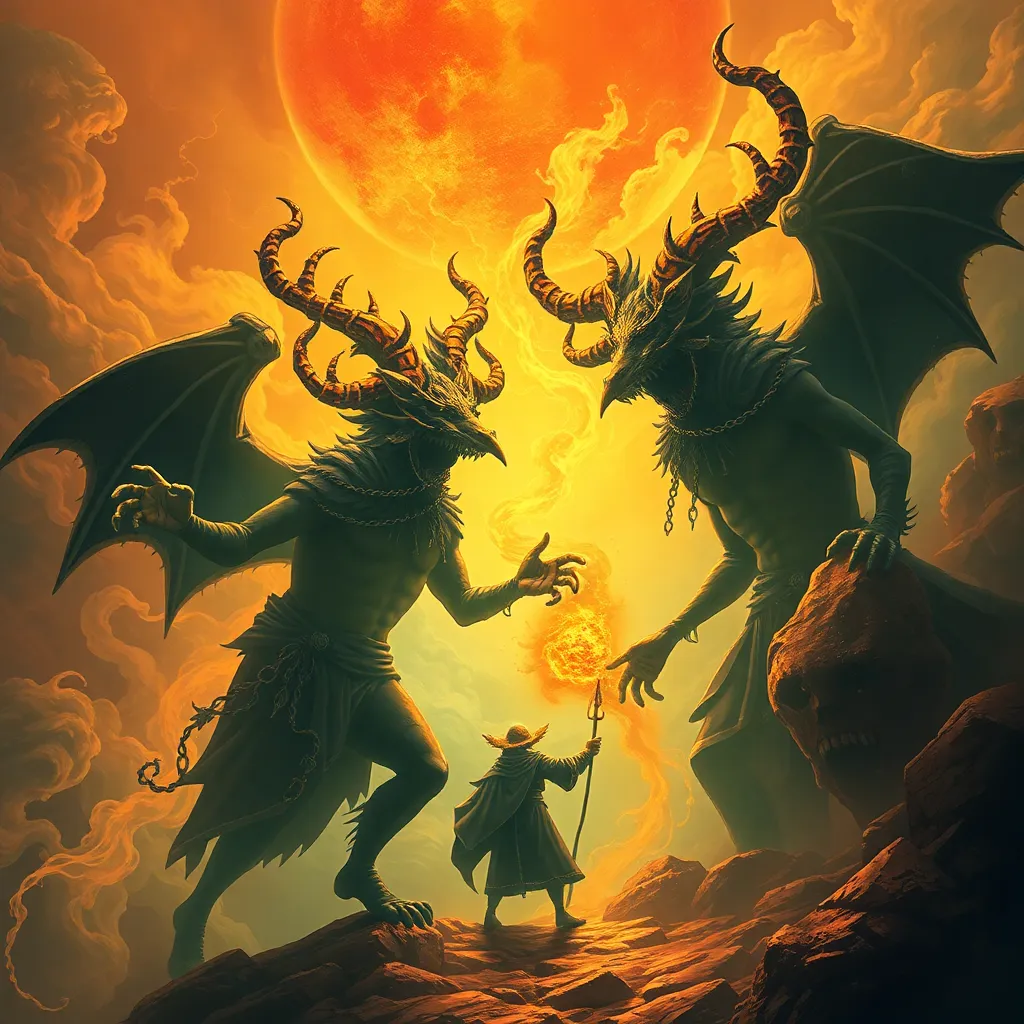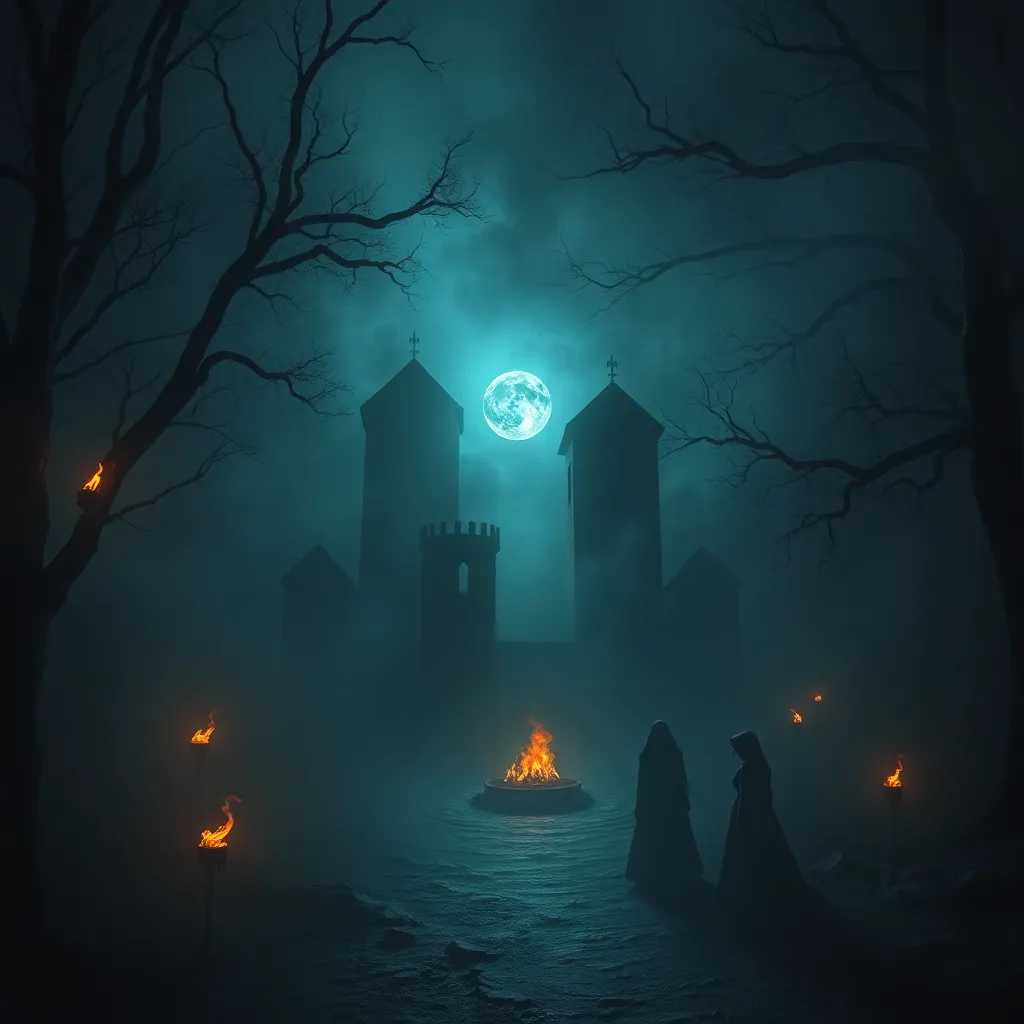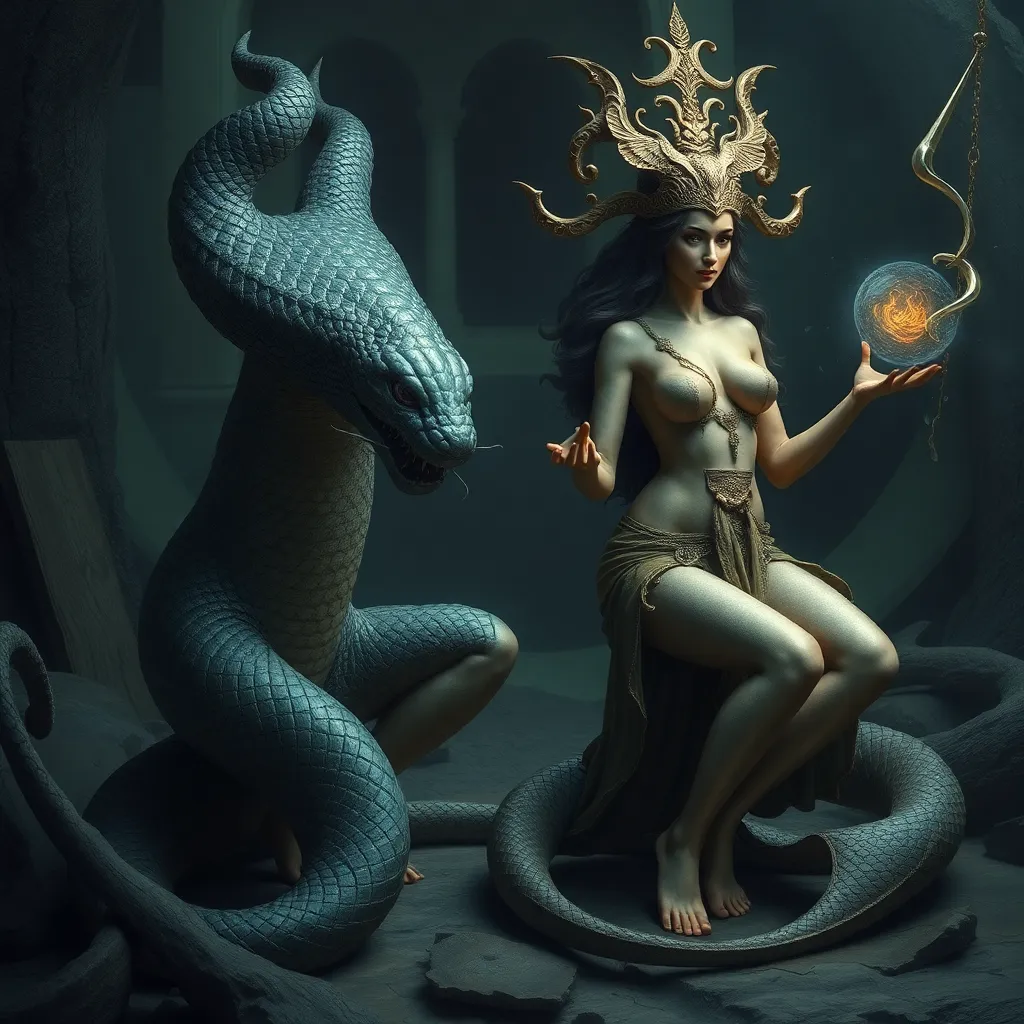The Ifrit and the Seven Deadly Sins: Their Connections to Greed, Wrath, and Pride
I. Introduction
The Ifrit is a fascinating figure in various mythologies, particularly within Islamic and Arabian folklore. Often depicted as a powerful and malevolent creature, the Ifrit embodies traits that resonate with the darker aspects of human nature. In contrast, the Seven Deadly Sins, a classification of vices in Christian theology, serve as a moral framework outlining the perils of human behavior. This article aims to explore the intricate connections between the Ifrit and the sins of greed, wrath, and pride, revealing how these themes intertwine across mythology and ethics.
II. The Mythological Background of the Ifrit
A. Origins and characteristics of the Ifrit in Islamic and Arabian folklore
The Ifrit, often described as a type of jinn, originates from Arabic mythology. Traditionally, Ifrits are characterized as powerful spirits associated with fire, capable of changing forms and possessing immense strength. They are often seen as embodiments of chaos and destruction, evoking fear and respect among those who encounter them.
B. The role of the Ifrit in various tales and its symbolic meanings
In folklore, Ifrits frequently appear in stories as antagonists, challenging heroes and embodying moral lessons. They symbolize the dangers of unchecked ambition and the consequences of straying from ethical paths. Their dual nature—both alluring and treacherous—serves as a cautionary tale about hubris and moral failings.
C. Comparison with other mythological creatures
Comparatively, Ifrits can be likened to figures in other mythologies, such as the Titans in Greek mythology or the demons in various religious traditions. Each of these creatures represents excess and moral decay, illustrating the universal themes of human struggle against darker impulses.
III. Understanding the Seven Deadly Sins
A. Historical context and origins of the Seven Deadly Sins
The concept of the Seven Deadly Sins emerged in early Christian teachings, codified by theologians like St. Gregory the Great. These sins—pride, greed, wrath, envy, lust, gluttony, and sloth—serve as a framework for understanding moral failings and their consequences in human life.
B. Detailed descriptions of greed, wrath, and pride
- Greed: An insatiable desire for wealth and material possessions, leading to unethical behavior.
- Wrath: Intense anger and hatred that can result in violence and revenge.
- Pride: An inflated sense of self-worth that often leads to a disregard for others and eventual downfall.
C. The significance of these sins in moral and ethical discussions
These sins serve as pivotal points in moral theology, prompting discussions about human nature, ethics, and the consequences of one’s actions. They reflect the internal battles individuals face when confronting their desires and impulses.
IV. The Connection Between the Ifrit and Greed
A. Analysis of how greed manifests in Ifrit tales
Greed is a pervasive theme in stories involving the Ifrit. Many tales depict Ifrits as beings driven by an insatiable hunger for power and wealth, leading to their downfall.
B. Examples of Ifrit characters driven by greed
One prominent example is the Ifrit in “The Fisherman and the Jinni” from “One Thousand and One Nights.” The Ifrit, trapped in a bottle, seeks revenge and freedom, driven by his desire for power and wealth, showcasing how greed can lead to destructive consequences.
C. Cultural interpretations of greed linked to the Ifrit
In many cultures, greed is viewed negatively, often resulting in isolation and despair. The Ifrit serves as a cautionary figure, reminding individuals of the perils associated with unchecked desire.
V. The Connection Between the Ifrit and Wrath
A. Exploration of wrath as a defining trait of the Ifrit
Wrath is perhaps the most defining trait of the Ifrit. Their fiery nature symbolizes uncontrolled anger, often resulting in catastrophic outcomes for those who invoke their rage.
B. Instances where the Ifrit embodies destructive anger
In various tales, Ifrits unleash their wrath upon those who disrespect them or threaten their power. These stories illustrate how unchecked anger can lead to devastating consequences, both for the individual and the wider community.
C. The broader implications of wrath in folklore and its ties to the Ifrit
Wrath, as portrayed through the Ifrit, serves as a reflection of humanity’s struggle with anger. Folklore often uses these narratives to explore the repercussions of vengeance and the importance of temperance.
VI. The Connection Between the Ifrit and Pride
A. Examination of pride within the narrative of the Ifrit
Pride is another critical aspect of the Ifrit’s character. Many tales depict Ifrits as overly proud beings who refuse to submit to authority or acknowledge their limitations.
B. How pride leads to the downfall of Ifrit figures in stories
In stories where Ifrits exhibit excessive pride, their arrogance often leads them to make fatal mistakes, resulting in their eventual defeat. This narrative arc serves as a reminder of the dangers associated with hubris.
C. Reflection on pride’s role in the human condition as mirrored by the Ifrit
The Ifrit’s pride mirrors human tendencies, emphasizing the need for humility and the recognition of one’s limitations. Tales of the Ifrit serve as parables about the risks of pride, urging individuals to remain grounded.
VII. Comparative Analysis: The Ifrit and Other Mythical Beings
A. Similarities between the Ifrit and figures representing greed, wrath, and pride in other cultures
The themes of greed, wrath, and pride are not exclusive to the Ifrit. In various mythologies, similar figures embody these traits, such as Loki in Norse mythology, who represents chaos and pride, or Midas in Greek mythology, who serves as a cautionary tale about greed.
B. The significance of these connections across different mythologies
These connections reveal a universal understanding of human nature, emphasizing that regardless of cultural background, the struggles with greed, wrath, and pride are intrinsic to the human experience.
C. Lessons learned from these comparisons
By examining the Ifrit alongside other mythological figures, we can draw lessons about the consequences of these sins, reminding us of the importance of ethical behavior and self-awareness.
VIII. Conclusion
A. Recap of the connections between the Ifrit and the Seven Deadly Sins
The exploration of the Ifrit in relation to the Seven Deadly Sins—greed, wrath, and pride—reveals deep connections between mythology and human morality. The Ifrit serves as a powerful symbol of these traits, illustrating the dangers they pose.
B. The relevance of these themes in contemporary culture
In today’s society, the themes represented by the Ifrit remain relevant, as individuals continue to grapple with greed, anger, and pride in various contexts. These narratives offer valuable insights into human behavior and ethics.
C. Final thoughts on the enduring legacy of the Ifrit and the moral implications of greed, wrath, and pride
The Ifrit’s legacy endures through its timeless representation of our struggles with the Seven Deadly Sins. As we reflect on these connections, we are reminded of the importance of humility, moderation, and ethical conduct in our lives.



